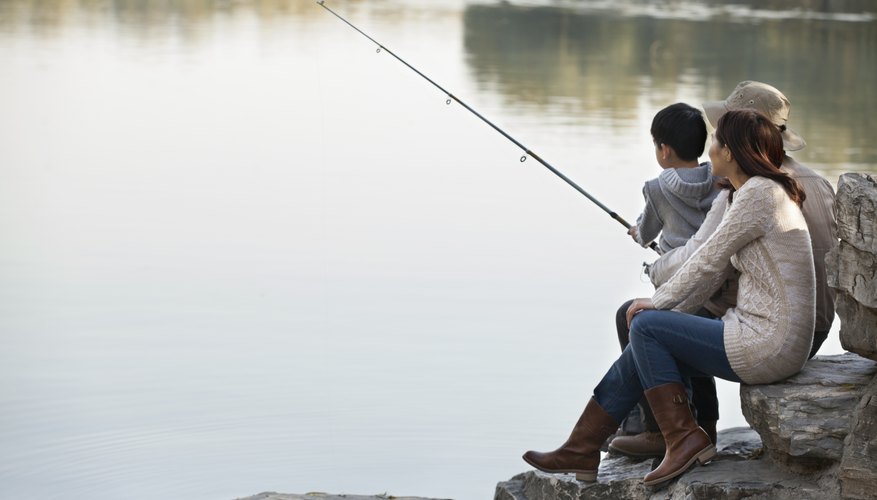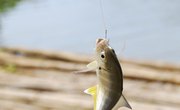
Anglers seeking to fish waters from shore often have trouble getting their bait out far enough to catch deep water fish, such as cod, salmon, lake trout, striped bass and mackerel. Some anglers use a special rig to take advantage of wind and currents to place their bait. This rig uses a simple balloon as a large bobber. Attached to the fishing rig, the balloon acts as both a float and a sail to carry fishing rig farther out than casting will accomplish. This rig is particularly good for fishing either cut bait or live bait fish.
Fishing rod, reel and line
Small bead
2 snap swivels
Medium-size balloon
Sinker
Hook
Bait
Tie a knot in your fishing line at about the same length as the water you want to fish is deep. The knot should be big enough to stop the bead from passing. Thread the bead, then the eyelet of the snap swivel onto the main fishing line, so they slide freely.
Tie the other snap swivel to the end of your main fishing line. Attach a leader to the swivel. Tie a hook onto the end of the leader. Open the snap swivel and attach a bell weight to keep the bait down in the water. Close the snap swivel.
Blow up a a brightly-colored, medium-size balloon a little more than halfway full and tie the balloon shut. Open the snap swivel and attach the throat of the balloon to the swivel clip. Close the snap swivel. This setup will allow the balloon to sit just above the swivel and weight when you cast. Then, the weight will pull the line through to swivel on the balloon to the proper depth, while keeping the balloon at the surface.
Check the current and wind direction so that your cast is in the right direction to carry the balloon out into the water. Cast the rig carefully, so as not to pop the balloon. Set your fishing reel to spool freely and allow the current and wind to carry the balloon out into the water. Lock your reel when the balloon reaches the desired location.
Watch for any change in the position of the balloon that may indicate a fish is on. A hard strike from a large fish often pops the balloon, which also acts as a good indicator that a fish is hooked.
Items you will need
References
Writer Bio
In Jacksonville, Fla., Frank Whittemore is a content strategist with over a decade of experience as a hospital corpsman in the U.S. Navy and a licensed paramedic. He has over 15 years experience writing for several Fortune 500 companies. Whittemore writes on topics in medicine, nature, science, technology, the arts, cuisine, travel and sports.



